IN PRAISE OF GERMAN FOOD
Chef Simon Cordes is reinventing the cuisine
German food gets a bad rap, most of it deservedly. Because the way it is (mostly) cooked in this country is an abomination. But in Germany it’s a glorious cuisine, with myriad exquisite tastes! And superb balance. Don’t let deli “German potato salad” or an American-German restaurant bratwurst, oozing fat and hinting at strange body parts, define German food for you. No, because German food is great — at its best (in Germany) as good as great Italian and French food in those countries. True, it does feature a lot of meat, fat and salt, and a cardiologist will roll his eyes at you for daring to suggest you might enjoy this, but, hell, we all die. I’d rather die of meat, fat and salt than boredom.
I love German food, but then I love spitting on the devil. Some years ago I was on a river cruise down the Rhine, and although that was forgettable, the food we ate on dry land was extraordinary. In one place I’ve sadly forgotten the name of, we were brought endless plates of meat — cooked and smoked, that dissolved in your mouth and let off fireworks of flavor, and sausages that were succulent and fragrant but not greasy. With vegetables and salads that were earthy and light.
But in America, German food is stuck, like a needle on a record, in the same time warp as Italian restaurants were in their red checkered vinyl tablecloths and macaroni-and-red-sauce days, before their metamorphosis fifty odd years ago. A crude facsimile of a splendid cuisine, with very little subtlety.
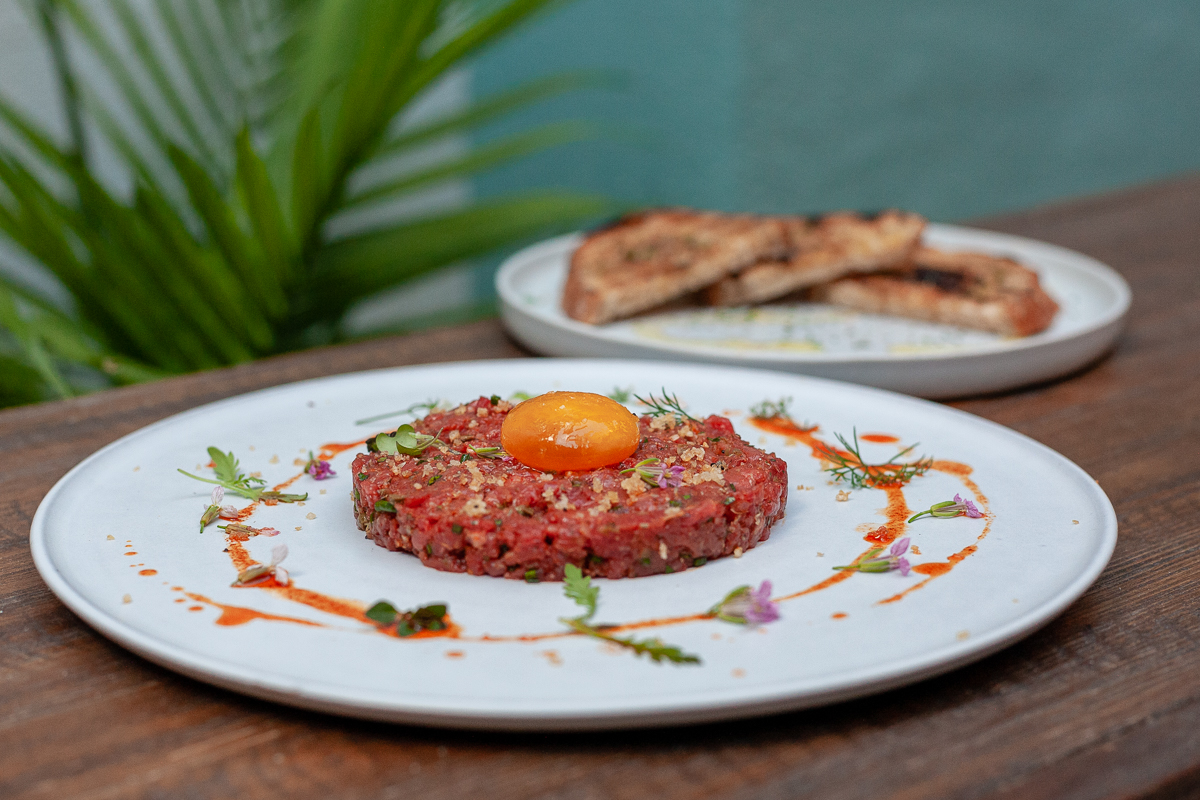
One man is trying to change that in America. German Chef Simon Cordes chef-simon.com who has been in this country since 2011, opened his restaurant, Simon, in New York City, in a loft last September, with the splendid and ambitious aim of transforming one of the world’s oldest set-in-its-ways cuisine into something modern and exciting.
The restaurant operated briefly from September to December with a seasonal based, prix fixe tasting menu, and then only did private events in the loft, owned by German fashion photographer and Simon’s friend Udo Spreitzenbarth, until the end of March when it opened back up to the public with an ala carte menu. It’s a beautiful space, fully suggesting a new kind of food experience.
His menu includes revisions on classics such as Cured King Salmon Cologne Style, done with horseradish cream, dill, pickled red onions and crispy rye bread chunks, or Pfälzer Saumagen, which is veal sausage with red sauerkraut, king oyster mushroom, chive-potatoes and a truffle demi-glace. That’s a very tasty sounding sausage. His German Potato Soup has truffles from Alba (which is like getting your Holy Water from the Vatican), leeks, smoked salt, creme fraiche, and a touch of chive-oil.
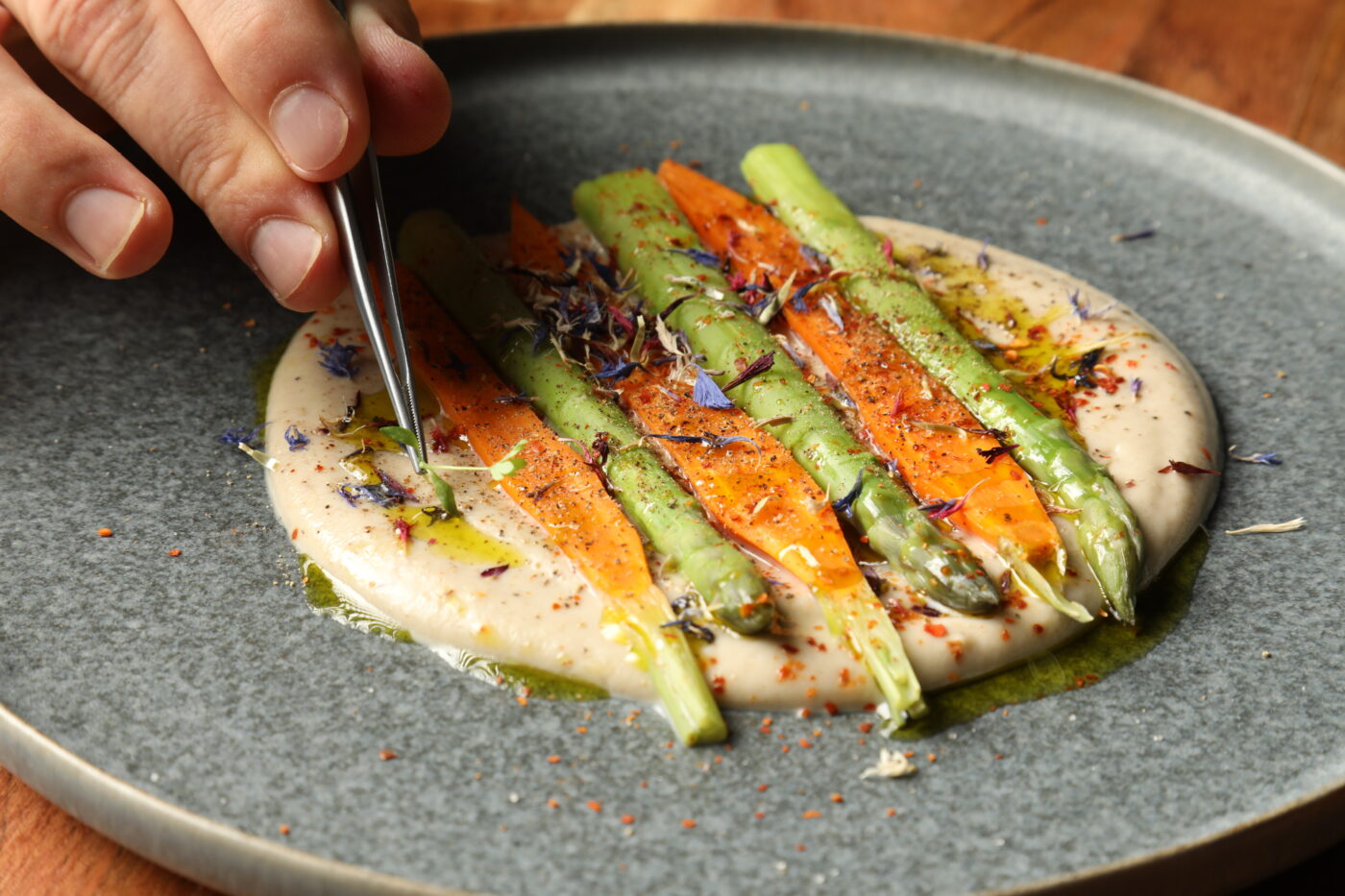
What he’s doing with German food is taking the centuries old traditional dishes as a base, and reimagining them, making them more flavorful and complex and somehow lighter. “In terms of modernization of the traditional dishes, I try to avoid carbohydrates, most of the dishes are gluten free,” he explains.
As for cooking techniques, he doesn’t stray from “the old fashion way. I don’t usually need to use fancy ingredients or sous vide machines.”
His Leipziger Allerlei is a delicious dish of seasonal and local vegetables. “According to legend,” Simon says, “this dish was invented in Leipzig after the Napoleonic Wars to protect the city from beggars and tax collectors. In storing the more expensive meat-based dishes, and serving vegetables instead, city officials hoped to encourage beggars and tax collectors to move on to neighboring cities.” Most food does not have as brilliant a backstory as that. “The dish is first attested in a 1745 cookbook,” Simon adds, strengthening its bona fides.
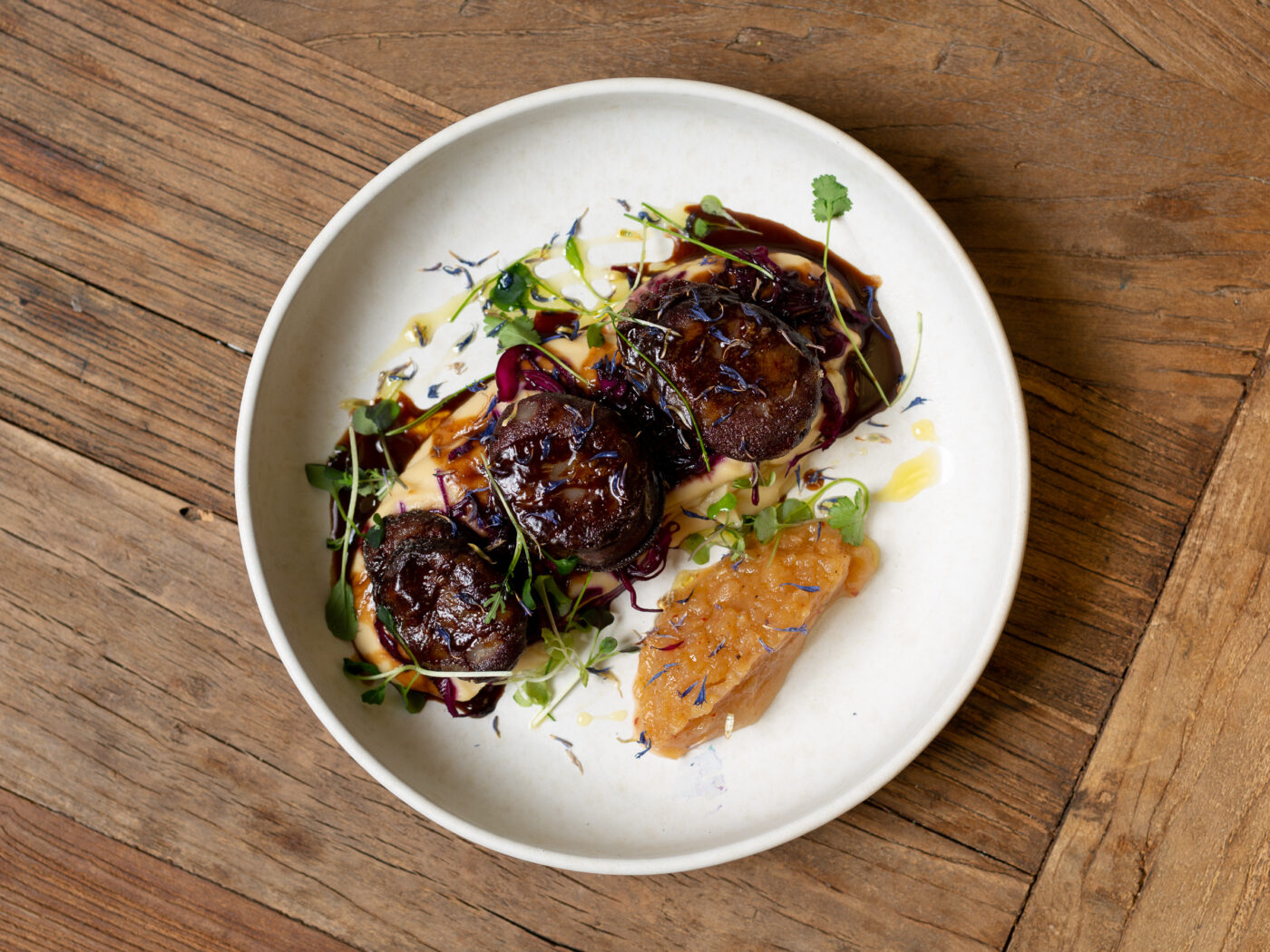
White Asparagus we know as a more refined (and usually expensive) version of the green. “The Romans were responsible for the spread of asparagus in Europe and thus in Germany, where it was first cultivated in Stuttgart Lustgarten,” Simon informs me. “In the 19th century, asparagus also changed color. Previously it was only cultivated as green. In Germany it is now grown almost exclusively underground.”
I ask him about Herring Housewife Style, another interpretation of his.
“Housewife Style is the name of an old way of preparing herring that has its origin in catholic based regions in Germany, mainly in the Rhineland. The secret of the special taste is the gutting technique. When the herring is gutted, the pancreas remains in the animal. It contains enzymes and creates an unmistakable taste. The herring is then fermented with salt and stored in oak barrels. Afterward it’s marinated for at least 24 hours with sour cream, heavy cream, gherkins, apples, onions, herbs and spices.”
He also has his take on perhaps the most familiar German staple, Sauerbraten, which he says dates back to the Roman empire, and was “updated” in the middle ages.
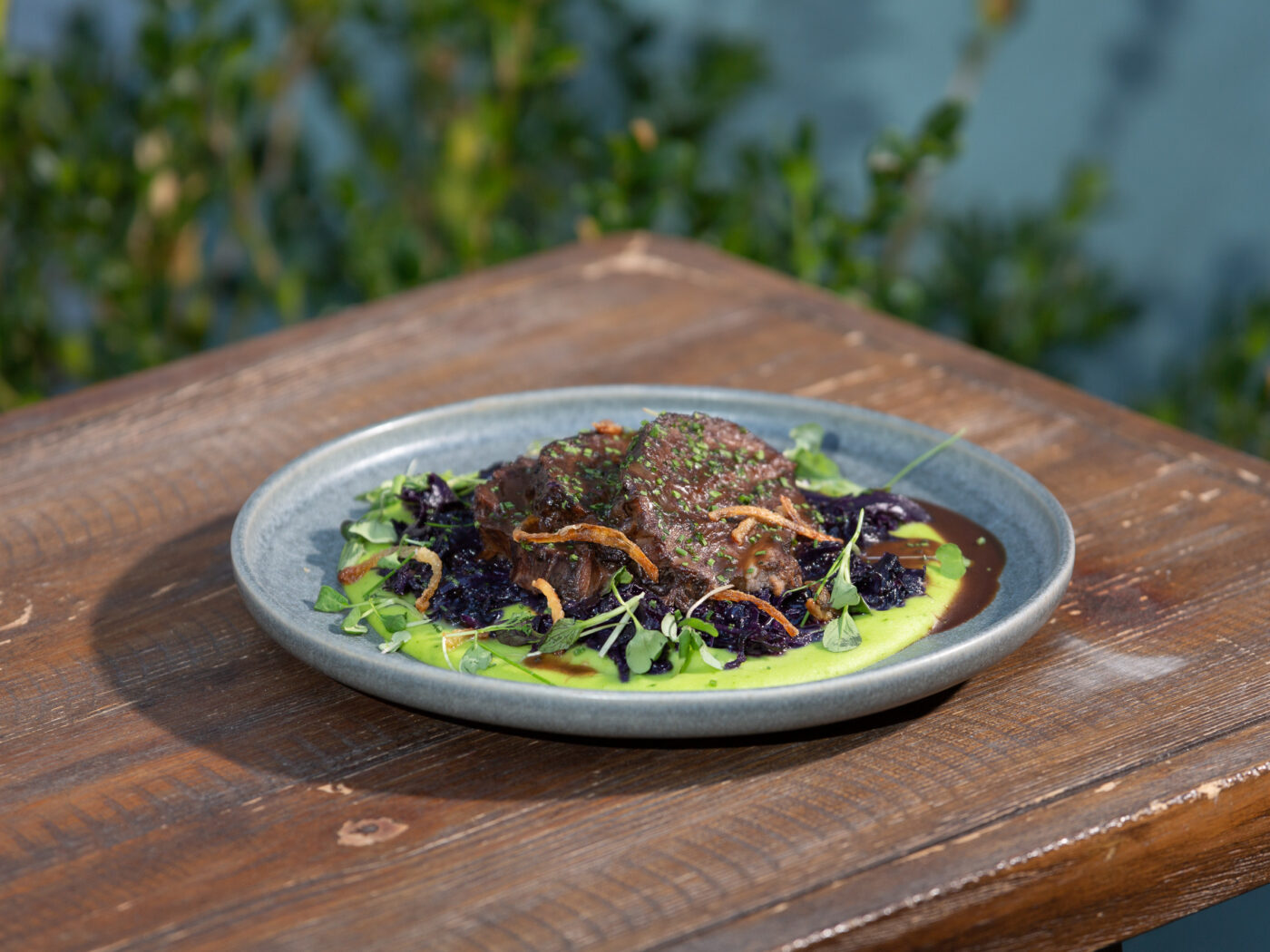
“It’s a piece of beef — back in the day it was horse — that is marinated in red wine vinegar and red wine for two weeks, and back then, because there was no refrigeration, they kept their meat in the basement in a barrel. This makes the meat very tender, and very flavorful. I will pan sear it to braise it slowly on low heat. To balance out the sourness, a slightly sweet gravy demi-glace is served with it. I use beef cheeks for that dish.”
He makes what we know as a blood sausage but in Germany is known as black sausage, which he calls — no confidence lacking here — “Heaven and Earth.” “It’s very delicious and very healthy, and nutritious. It’s made with pork and beef blood, and meat and some spices.”
And for a very recognizable dessert, Simon’s Apple Strudel is finished with cinnamon whipped cream and raspberry coulis. “Apple Strudel has its roots in Turkish baklava,” he says. “Due to the long Turkish occupation of Hungary, the Hungarians adopted this strudel and it made its way to Vienna and then conquered southern Germany.”
I told him that I thought German food had a perception problem.
“The German [chefs] are not innovative, also in Germany. We have a lot of Michelin starred restaurants in Germany, but they are for French and Italian food, where they copy one to one. The German chefs don’t really identify with their own cuisine. They’re not really excited to cook it. They are, I think, insecure about their heritage.

“Most German chefs don’t associate German cuisine with fine dining, which is a misconception. French Haute cuisine has its origin from French comfort food, the same applies for the Spanish Avant Garde which has its origin from Spanish comfort food.”
But there’s hope! Simon says that over the last five to ten years some restaurants in Germany, particularly Berlin, have been trying to break the mold with “local cuisine, local ingredients, very sustainable. They are trying to be innovative.
“There are many German restaurants here, but they are mostly comfort food, heavy dishes. There’s nothing wrong with that, but we have so many beautiful dishes in Germany and I want to showcase that here in New York. Our philosophy is to showcase elevated German cuisine which can be competitive with the fine French and Italian restaurants in New York.”
The key element to traditional German culinary technique is, he says, fermentation. “Fermentation is the most common technique. Applied on cabbage — Sauerkraut — and the production of beer. What makes the fermented cabbage specifically German? The seasoning with sea salt, juniper berries and bay leaf, stored in a large ceramic pot in the basement, or underground for up to 12 weeks.
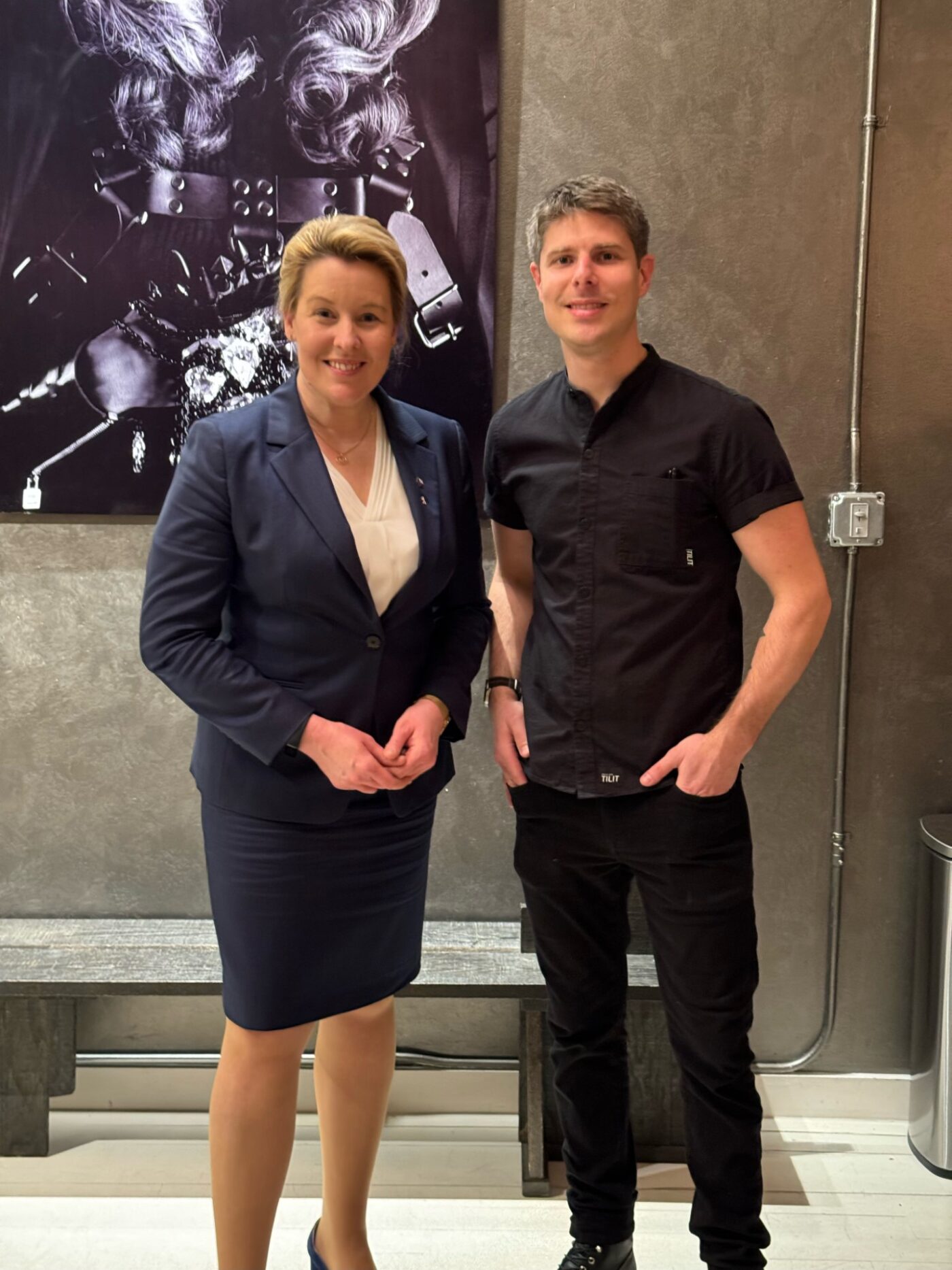
“The bread culture also plays an important role. Especially the sourdough, bretzel, which are fermented as well, and pumpernickel are an essential part of our heritage. “Brotzeit” is a snack preferably in the late afternoon served with cultured butter, cured meat and cheese.”
No cuisine is an island — or something like that — so what other cultures influenced German food?
“Germany was in the last 250 years strongly influenced in the south from the Austrian and Italian cuisines and in the north from Scandinavian and Slavic cuisine. Now it’s become more cosmopolitan with the influence of immigrant cultures — Chinese, Vietnamese, Greek and especially the Turkish cuisine have become important roles in the culinary landscape of Germany.”
He said he personally has been influenced by the Scandinavian curing technique, which Germans adopted to preserve salmon and ham to strengthen its shelf life and flavor.
He is a man on a mission. And his restaurant’s success is bound to spawn a wonderful new German food movement in America.
“Michelin stars are nice to have, but not crucial for me,” he says. “For me it is important that the average guest can understand my dishes, without overcomplicating it to please the Michelin tester, or impress other chefs.”
Simon, 208 W. 30th street, New York, NY 10028









